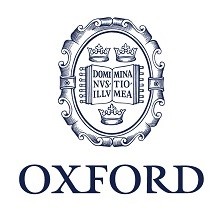
پپتیدهای ضد میکروبی طبیعی در برابر مایکوباکتریوم توبرکلوزیس
سل، ناشی از مایکوباکتریوم توبرکلوزیس ، یکی از بیماری های عفونی پیشرو در سراسر جهان است. کشف داروهای جدید با ساختارهای منحصر به فرد و مکانیسم های غیر معمول برای درمان مایکوباکتریوم توبرکلوزیس و مبارزه با مقاومت ضدمیکروبی، یک نیاز فوری است. ترکیبات طبیعی تنوع گسترده ای از ساختارهای شیمیایی را دارند و طیف گسترده ای از قدرت in vitro را در برابر مایکوباکتریوم توبرکلوزیس نشان می دهند. چند بررسی اخیر نشان داده اند که پپتیدهای ضد مایکوباکتریایی طبیعی می توانند عملکرد دیواره سلولی مایکوباکتریوم را از طریق نحوه عمل های متفاوت مختل کرده، بنابراین با اهداف داخل سلولی از جمله اسیدهای نوکلئیک، آنزیم ها و حتی اندامک ها ارتباط برقرار کند. مهم تر از آن، احتمال مقاومت ضد مایکوباکتری کم است. این مقاله، چند پپتید ضد میکروبی طبیعی جدا شده از منابع مختلف ارگانیسم، از جمله باکتری، قارچ، گیاهان و حیوانات را ارائه می دهد. علاوه بر این، ویژگی های مولکولی این مولکول ها موضوعی است که مورد توجه زیادی قرار گرفته است. این پپتیدها به دلیل ویژگی های شیمایی خود، صفات مشترک دارند، که ممکن است با فعالیت های بیولوژیکی آنها در ارتباط باشد. از این رو، بخش های مختلف از ساختار مولکولی می توان به منظور افزایش نفوذ به سلول های هدف تغییر یابد. این مقاله همچنین اطلاعات موجود در مورد خواص پپتیدهای ضد مایکوباکتری مرتبط با فعالیت های بیولوژیکی آن ها را خلاصه می کند.
مقدمه
مایکوباکتریوم توبرکلوزیس ، عامل سل، توسط رابرت کخ در اوخر قرن نوزدهم کشف شد (1). این عامل عفونی کشنده در حال حاضر یکی از شایع ترین بیماری ها است، که حدود یک سوم از جمعیت جهان را آلوده کرده است (2 و 3). با توجه به بررسی WHO (4) تخمین زده می شود که 6/8 میلیون نفر در سال 2012 به سل آلوده شوند. علاوه بر این، حدود 450،000 مورد MDR-TB و 170.000 کشته وجود خواهد داشت. گسترش موارد جدید، عوارض جانبی در پاسخ به داروهای ضد سل، عوارض همزمان HIV و نبود واکسن موثر، مشکلات بزرگ در جستجوی داروهای ضد سل ایجاد کرده است (2، 5، 6). سلMDR-TB می تواند توسط شیمی درمانی با چند دارو درمان شود، اما درمان طولانی مدت (حداقل 6 ماه) منجر به موفقیت کم بیمار می شود (5). در حال حاضر، درمان سل شامل یک ترکیبی از داروهای رده اول مانند ایزونیازید و ریفامپین، به همراه پیرازینامید و اتامبوتول در 2 ماه اول است (5). در صورتی که پروتکل درمانی 6-9 ماه اول با استفاده از چهار دارو، یعنی ایزونیازید، ریفامپین، اتامبوتول و پیرازینامید، با توجه به ظهور مقاومت دارویی رده اول با شکست مواجه شود، یک برنامه درمانی جایگزین یعنی 4 ماه تجویز دارو با ترکیبی از داروهای رده دوم مانند آمینوگلیکوزیدها، سیکلوسرین، تریزیدون، اتیون آمید، پروتیون آمید، کاپرئومایسین، آمینوسالیسیلیک اسید و فلئوروکوئینولون ها آغاز می شود. این داروهای رده دوم به طور کلی سمی تر و با تاثیر و قابلیت تحمل کمتر است (6).
TB, caused by Mycobacterium tuberculosis, is one the leading infectious diseases worldwide. There is an urgent need to discover new drugs with unique structures and uncommon mechanisms of action to treat M. tuberculosis and combat antimycobacterial resistance. Naturally occurring compounds contain a wide diversity of chemical structures, displaying a wide range of in vitro potency towards M. tuberculosis. A number of recent studies have shown that natural antimycobacterial peptides can disrupt the function of the mycobacterial cell wall through different modes of action and thereafter interact with intracellular targets, including nucleic acids, enzymes and even organelles. More importantly, the probability of antimycobacterial resistance is low. This review presents several natural antimicrobial peptides isolated from different organism sources, including bacteria, fungi, plants and animals. In addition, the molecular features of these molecules are the subject of much attention. Such peptides have common traits among their chemical features, which may be correlated with their biological activities; hence, different parts of the molecular structures can be modified in order to increase penetration into the target cells. This review also summarizes the available information on the properties of antimycobacterial peptides associated with their biological activities.
Introduction
Mycobacterium tuberculosis, the causative agent of TB, was discovered by Robert Koch at the end of the nineteenth century.1 This infectious killer agent currently is one of the most common diseases, infecting approximately one-third of the world’s population.2,3 According to the WHO survey,4 it is estimated that there were 8.6 million people infected with TB in 2012. In addition, there are an estimated 450000 MDR-TB cases and 170000 fatalities occur as a result. The development of new cases, adverse events in response to anti-TB drugs, co-morbidity with HIV and the lack of an effective vaccine pose great problems in the search for new anti-TB drugs.2,5,6 TB can be cured with multidrug chemotherapy, but the lengthy therapy (at least 6 months) has led to poor patient compliance.5 Currently, the treatment for TB includes a cocktail of first-line drugs, isoniazid and rifampicin, supplemented with pyrazinamide and ethambutol in the first 2 months.5 If the early 6 –9 month treatment protocol using four drugs, namely isoniazid, rifampicin, ethambutol and pyrazinamide, fails due to the emergence of first-line drug resistance, an alternative treatment programme is started of a further 4 months of drug administration with a combination of second-line drugs, including aminoglycosides, cycloserine, terizidone, ethionamide, protionamide, capreomycin, aminosalicylic acid and fluoroquinolones. These secondline drugs are generally more toxic, less effective and less tolerable.6
مقدمه
ویژگی های ضد میکروبی AMPs
ویژگی های ساختاری AMPs
مکانیسم های عمل مولکولی
روابط ساختار- فعالیت (SARs )
سمیت
نتیجه گیری
Introduction
Antimicrobial features of AMPs
Structural features of AMPs
Molecular mechanisms of action
Structure–activity relationships (SARs)
Toxicity
Conclusions
- ترجمه فارسی مقاله با فرمت ورد (word) با قابلیت ویرایش، بدون آرم سایت ای ترجمه
- ترجمه فارسی مقاله با فرمت pdf، بدون آرم سایت ای ترجمه
